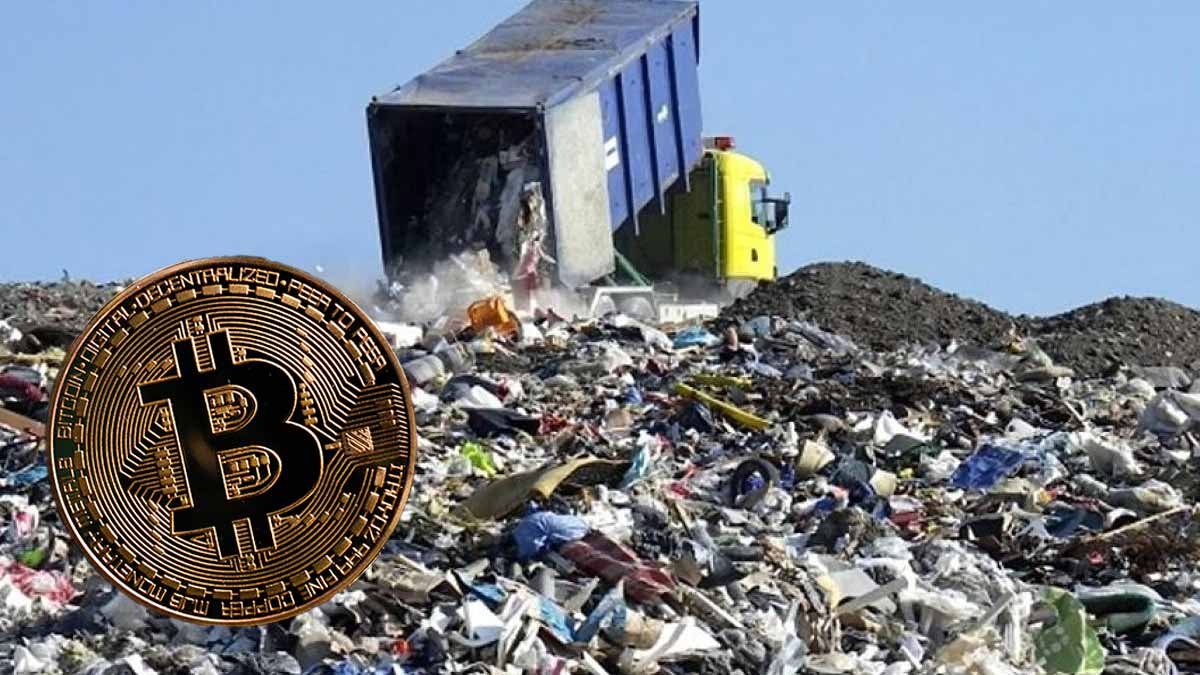A single misstep turned a quiet routine into a high-stakes chase. A man threw away a hard drive tied to a fortune in Bitcoin, buried in landfill layers and lost to time. After years of refusals and courtroom setbacks, his pursuit now bends toward the screen, where the next chapter promises tension, spectacle, and lessons.
From a tossed drive to a modern cautionary tale
Back in 2013, Welsh computer technician James Howells cleared his desk and mistakenly trashed a hard drive holding a private key. That device pointed to 8,000 coins whose value ballooned from roughly eight million dollars to about 742 million, near €649 million, transforming an ordinary chore into calamity for him.
He soon learned the brutal arithmetic of crypto custody: control lives inside a unique secret, not a username. Without that secret, coins remain visible yet unreachable, since networks validate signatures, not intentions. There is no helpline, no reset button; cryptography protects wealth while punishing lapses with absolute, irreversible silence.
Determined, he mapped ambitious recovery plans, proposed staged excavations, and sought permissions. He raised funding, recruited engineers, and sketched workflows to identify fragments in mountains of waste. The idea sounded cinematic; yet he still faced resistance, because landfills are hazardous systems where tearing layers open risks gases, leachate, and collapse.
Why Bitcoin access hinges on a single private key
On blockchains, ownership is proven by a private key that signs transactions. The address is public; authority is not. Banks can override mistakes; decentralized networks cannot, because consensus defers to math. If the key disappears, the wallet becomes a locked door with no spare, and balances only echo history indefinitely.
Practical defenses exist: hardware wallets, well-stored seed phrases, split backups, and routine drills. Each measure adds resilience, although it introduces chores that people postpone. Good practice includes testing restores, isolating secrets from networks, and keeping versions in separate places. Convenience resists discipline, yet preparation beats luck when memory fails.
In this case, the secret lived on a discarded disk buried under compacted waste. The owner sought to recover the medium itself, hoping it remained intact enough to read. Because the private key unlocks Bitcoin, a single successful scan could restore full control, if corrosion and pressure had spared sectors.
Environmental, legal, and technical barriers stack against excavation
Local authorities rejected excavation over credible ecological risks. Disturbing layers can release methane, aerosols, and contaminants. Heavy machinery crushes unstable cells and can redirect leachate toward soil or waterways. Even careful sampling changes gradients. Safety rules require monitoring, gas management, containment, and remediation budgets that dwarf private recovery hopes.
Law complicates everything. Once discarded, objects at a landfill belong to the site operator under local rules. Excavation demands permits, environmental assessments, insurance, and oversight. Unauthorized digging risks prosecution. Administrators balance public health, liability, and precedent, since granting access for treasure hunting could invite copycats and escalate systemic hazards.
In 2024, a British judge assessed the prospects as negligible. Years underground likely warped platters, corroded traces, and compromised controllers. Even if fragments emerged, forensic recovery would struggle against moisture, pressure, and time. The cost-benefit calculus, measured against public risk, left officials convinced that excavation remained unjustifiable.
Robots, drones, and bureaucracy against Bitcoin’s vanishing point
The team proposed aerial mapping with drones, thermal imaging, and AI sorting to narrow targets. Ground robots would sift layers with minimal disturbance, pulling potential drives into sealed chambers for screening. The phased plan emphasized sampling, filtration, and traceability, while recovery labs prepared to attempt controlled reads under microscopes.
Officials remained unconvinced. They cited uncertain hit rates, budget blowouts, liability, and disruption to waste operations. Even with sensors and protocols, any breach could trigger cascading issues. The landfill’s purpose protects the public; opening it for treasure converts infrastructure into a gamble. Risk grew faster than projected benefits.
The paradox sharpened: extraordinary value sat beyond reach because cryptography kept its promise. Even if the disk surfaced, chain-of-custody and integrity checks would follow before any read. Yet the potential to unlock Bitcoin worth hundreds of millions intensified pressure, while the rulebook insisted environmental safety must come first.
From failed excavation to an on-screen second life
With excavation blocked, a new route emerged: a documentary series. American producer LEBUL acquired rights to dramatize the pursuit. The working title evokes a buried treasure hunt centered on James Howells, promising re-creations, technical breakdowns, and legal context. The project targets completion by late 2025, pending production milestones.
He framed the film as a chance to show the plan that never left paper. “This is the first time I’ve really been able to show what we wanted to do on the landfill site,” he said. He added a defiant note: “I’m not giving up the fight.”
Viewers may get spectacle; they also get practical lessons. Secure secrets, rehearse restores, and avoid single points of failure. Wealth tied to Bitcoin or any cryptographic asset demands procedures, not luck. When laws, ecology, and physics align against improvisation, foresight becomes cheaper than heroics, and hesitation becomes very costly.
What this saga teaches about safeguarding digital wealth
One discarded drive now stands as shorthand for an era. The episode compresses hope, loss, governance, and grit, while reminding us that code honors secrets without mercy. Keep backups, test them, and separate copies. Respect law and environment, even under pressure. Because the value locked in Bitcoin proves immense, the responsibility to protect access must feel larger still. Plan roles, document steps, and store recovery phrases offline. Small routines, kept consistently, prevent large failures.
